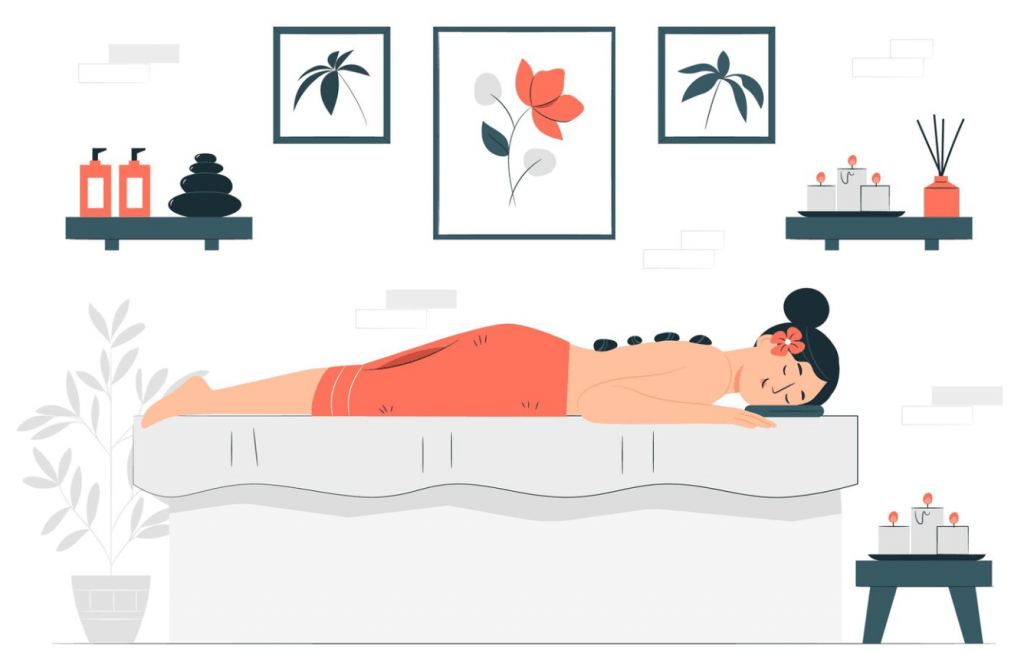What Is A Wellness Room?

A wellness room is a private area where employees can escape from the hustle of the office to prioritize their well-being. Offering a wellness room is not only an employee perk but also has positive implications for productivity and performance.
A wellness room supports employees’ mental well-being by providing a designated space for relaxation and stress relief. It allows team members to take a break from work demands and pressures to recharge and rejuvenate. Engaging in mindfulness practices, meditation, or simply moments of solitude in a safe space can reduce anxiety, improve mood, and enhance mental health. As a result, employees are more likely to be engaged, motivated, and productive upon returning to work.
Wellness rooms can also be utilized to promote physical health, such as yoga or power naps. Regular physical activity and movement can enhance employees’ energy levels and concentration, improving work performance and productivity. Additionally, the privacy and comfort provided by wellness rooms make them ideal spaces for nursing mothers to pump. Supporting physical health practices and accommodating personal needs fosters a healthy workforce and boosts job satisfaction.
What Is Needed In A Wellness Room At Work?

Organizations should include some essential elements when creating a wellness room to ensure its effectiveness and optimize the benefits for employees.
- Natural Lighting: Maximize natural light to bring the outdoors inside, enhancing mental well-being. A shatterproof plexiglass ceiling for natural light allows abundant sunlight to filter into the room.
- Adjustable Lighting: Dimmable or adjustable lighting is a versatile option to create different atmospheres suitable for various activities, from a zen yoga flow to a creative expression session.
- Calming Colors: Paint and decorate the wellness room with blues, greens, or neutral tones to create a peaceful ambiance.
- Privacy Screens: Install partitions or screens to offer privacy for nursing employees or those who need a secluded break.
- Soundproofing: A soundproofed wellness room creates a serene environment and minimizes noise disturbance, which can otherwise contribute to stress and disrupt relaxation or focus within the space. A 3.5-inch-thick wall construction provides acoustic privacy.
- Comfortable Seating: Provide ergonomic chairs to optimize health and safety or cozy seating options for relaxation and comfort.
- Fridge: Add a small fridge to store healthy snacks and beverages such as fruits, vegetables, yogurt, hummus, natural fruit juices, and kombucha, or for pumping mothers to keep breast milk.
- Plants: Turn the wellness room into an oasis with a variety of indoor plants. Research shows that plants can boost productivity, improve air quality, and enhance mental well-being.
- Relaxation Tools: Include items such as stress balls, essential oil diffusers, and calming music to promote relaxation.
- Information Resources: Display health content such as books and flyers on stress management, nutrition, mental health, or other wellness topics. Subscribe to Wellable DIY for a free wellness flyer every month!
Ideas For A Wellness Room
There are many types of wellness rooms to cater to employees’ needs and goals, whether that’s enhancing their physical health, boosting their mental well-being, or providing a pleasant area for maternal needs.

- Meditation Room: Create a dedicated space for meditation and mindfulness practices, fostering a sense of relaxation and peace. Incorporate soft lighting, floor cushions or mats, and nature-inspired elements like potted plants or a small indoor waterfall to enhance the room’s tranquility. White noise or gentle instrumental music can mask external distractions, allowing employees to delve deeper into their meditation practice.
Encourage employees to embrace mindfulness techniques like focused breathing, body scanning, or guided meditation sessions. These practices help reduce stress, improve concentration, and promote emotional well-being. By dedicating time to meditation during work hours, employees can return to work feeling refreshed and rejuvenated.
- Yoga & Stretching Room: Create an inviting space where employees can participate in yoga classes or engage in stretching exercises at their own pace. Outfit the room with yoga mats and foam rollers, inviting employees to step away from their desks and release tension through stretches and poses.
Organize weekly yoga sessions led by a professional instructor or access to instructional videos that employees can follow for self-guided practice. Encouraging regular movement through yoga and stretching can improve circulation, reduce the risk of musculoskeletal issues, and boost overall physical well-being.
Moreover, offering scheduled stretching breaks during the workday can alleviate the strain caused by long periods of sitting, leading to increased comfort and focus.

- Fitness Center: Allocate a room for exercise equipped with gym equipment such as treadmills, stationary bikes, weights, and resistance machines. Promote the use of the fitness center by providing flexible breaks or scheduling fitness classes during lunch hours or before and after work. Encourage employees to engage in cardiovascular workouts to boost endurance and strength training to build muscle and bone density.
Regular physical activity not only leads to improved physical health, but it also has significant mental health benefits. Exercise releases endorphins, the “feel-good” hormones, which can reduce stress and anxiety, resulting in better overall well-being and a more positive outlook on work and life.
- Upleveled Nursing Room: It’s mandatory for workplaces to provide a designated and private area for nursing mothers to breastfeed or pump milk, but why not give it an upgrade? Elevate the standard nursing room by creating a warm and inviting space that not only fulfills the practical needs of nursing mothers but also nurtures their well-being. Start by providing comfortable seating options, such as plush armchairs or gliders, where mothers can relax and comfortably nurse or pump milk. Enhance the ambiance with calming and aesthetically pleasing décor, like soft colors, artwork, and soothing music that helps mothers feel at ease. A small refrigerator allows mothers to safely store their expressed breast milk until they can take it home.
This upgrade provides an added layer of convenience and consideration, showing nursing mothers that their needs are valued and respected in the workplace. By offering an upleveled nursing room, employers demonstrate their commitment to supporting work-life balance for parents and contribute to a positive and family-friendly work environment.

- Knowledge Nook: Create a dedicated space that encourages continuous learning and personal growth. Furnish the Knowledge Nook with a comfortable seating arrangement that invites employees to settle in and immerse themselves in reading. Optimize natural lighting or provide bright task lighting to make reading more comfortable and enjoyable.
Curate a diverse selection of books and magazines covering a wide range of topics, including self-improvement, wellness, personal development, and even fiction for those seeking an escape from everyday pressures. By incorporating materials related to wellness, the nook becomes a valuable resource for employees seeking information and inspiration on how to lead healthier and more fulfilling lives.
- Hobby Haven: Hobby rooms allow employees to take a break from their daily responsibilities and engage in activities they’re passionate about. A large communal table serves as a hub for various hobbies, whether it’s assembling Lego sets, crocheting blankets, or pursuing artistic endeavors.
Stock the room with storage bins and organizers filled with materials for different hobbies, catering to a wide range of interests. Encourage employees to bring their own materials and store them in designated spaces, creating a sense of ownership within the room.
By promoting hobbies in the workplace, employers acknowledge the importance of downtime and creative expression. It can also encourage employees to connect with like-minded colleagues, fostering a sense of community and camaraderie within the workplace.
- Creative Corner: Equip this creative space with a wide array of art materials, including canvases, paintbrushes, acrylic paints, watercolors, colored pencils, sketchbooks, and crafting supplies. This inviting room becomes a haven for those seeking a break from their daily tasks to explore their creative side. Seasoned artists can find solace in expressing themselves through their chosen medium, while beginners can experience the joy of discovering their artistic talents.
Encourage employees to take short breaks or scheduled creative expression sessions during the workday. Engaging in creative activities allows employees to tap into their imagination, enhancing problem-solving skills and fostering innovative thinking that can positively impact their work. The Creative Corner can also serve as an excellent team-building activity, where employees collaborate on art projects, promoting a sense of unity and creativity within the workplace.

- Massage Room: A massage room is a treat for employees in need of some unwinding. Install comfortable massage chairs or bring in professional massage therapists on a regular basis to provide massages to employees. The room should exude a serene ambiance with soft lighting, calming scents, and soothing music, offering a much-needed escape from the demands of the workday.
Massage therapy has numerous benefits, including reducing muscle tension, relieving stress, and improving overall well-being. By providing a Massage Room, employers demonstrate their commitment to employee wellness and prioritize mental and physical rejuvenation. It sends a clear message that employees’ health and happiness are valued and supported, fostering a positive and caring work environment.
- Snooze Room: Sometimes, caffeine doesn’t cut it. Dedicate the wellness room for power naps, complete with comfortable recliners or nap pods, soft blankets, and eye masks to create a peaceful environment conducive to sleep. Encourage employees to take short, 20-minute naps during their breaks to recharge and combat fatigue.
A well-rested workforce is more likely to be engaged, creative, and capable of handling challenges effectively. Emphasizing the importance of rest through the Snooze Room also promotes a healthy work-life balance, demonstrating that the organization values employees’ well-being beyond their productivity.

- Digital Detox Zone: Designate a space where employees can disconnect from electronic devices and engage in activities like puzzles or board games, reducing screen time and promoting mental well-being.
Upon entering the Digital Detox Zone, encourage employees to leave their devices in a designated bin at the door. This simple gesture reinforces the commitment to a technology-free experience, allowing employees to fully immerse themselves in the present moment. By stepping away from screens, employees can reduce eye strain, mental fatigue, and potential burnout caused by prolonged technology use.
Conclusion
Wellness rooms are a valuable addition to any workplace, providing employees with a dedicated space to prioritize their well-being. This offering demonstrates authentic care for employees’ wellness, contributes to a culture of health, and can be an enticing benefit to prompt team members to return to the office. As a result, job satisfaction, employee retention, and overall health outcomes improve.
To ensure that the wellness room meets employees’ needs and preferences, it’s crucial to gather their feedback and involve them in the decision-making process. Conducting surveys, holding focus groups, or implementing suggestion boxes can provide insights into the wellness activities and amenities employees desire. By encouraging regular feedback, organizations can continuously improve and refine the wellness room, creating a space that truly caters to their workforce. This fosters a sense of ownership and empowerment among employees, creating a collaborative environment where their individual well-being is prioritized.












